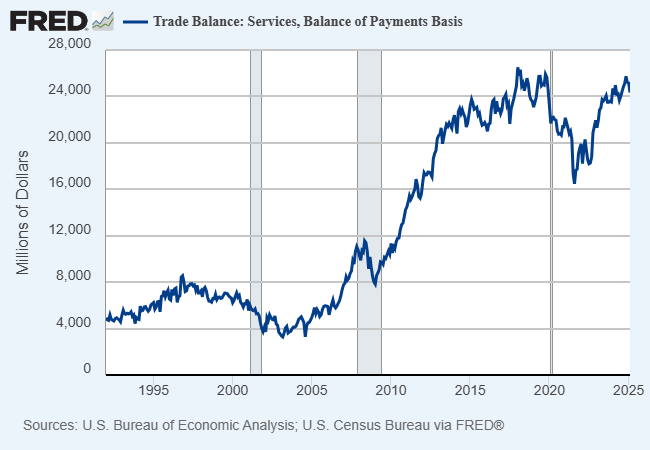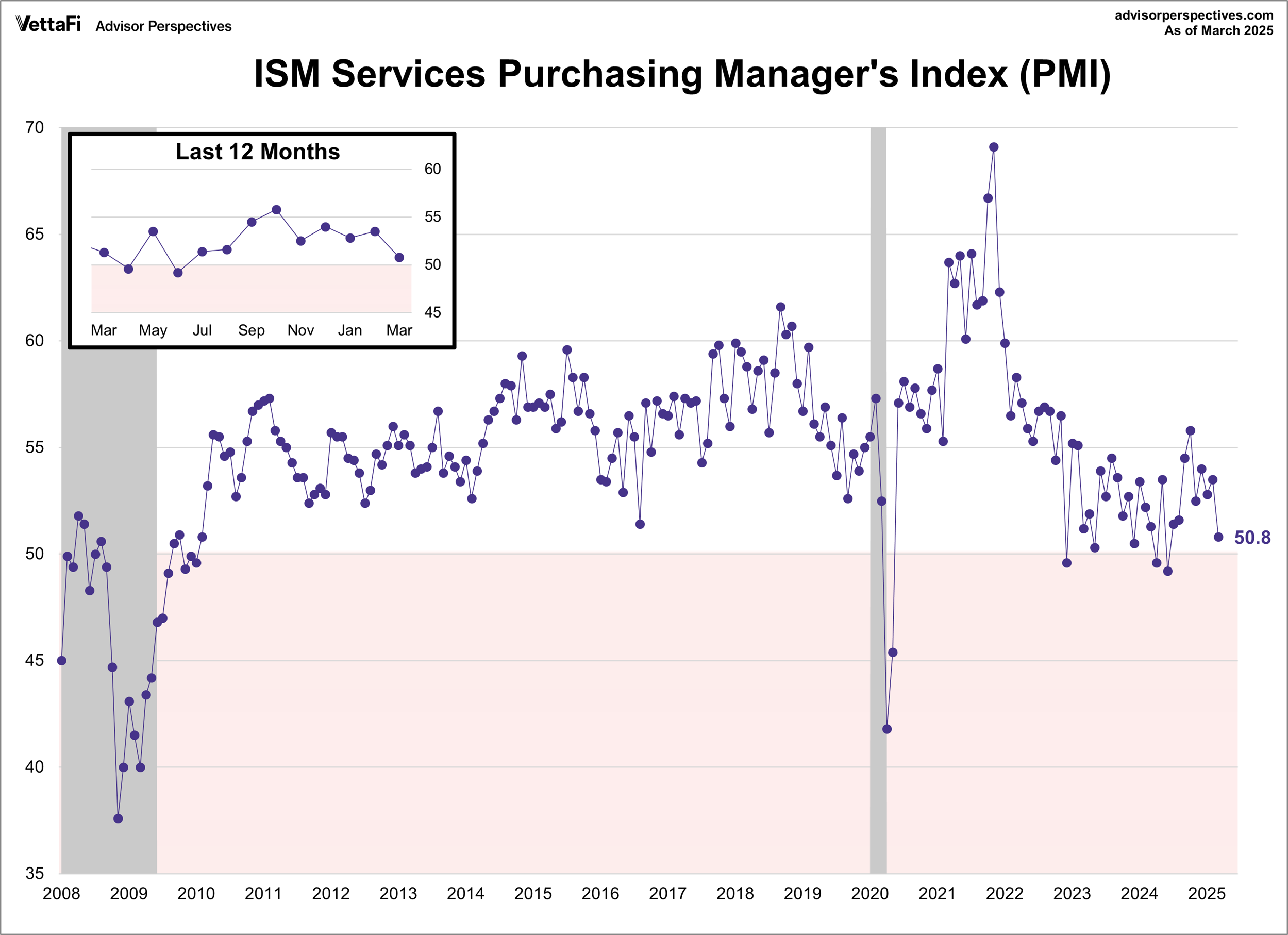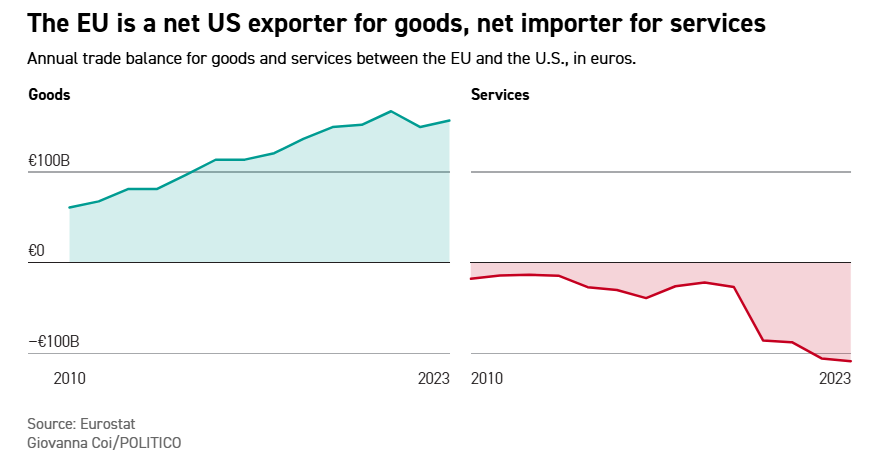Adaptimmune stock plunges after announcing Nasdaq delisting plans
The US is the world’s leading exporter of services to the global economy. The services sector is also the dominant source of economic activity in America. Those are strengths, but they’re also vulnerabilities in a global trade war.
A key risk for the American services sector is that raising tariffs virtually ensures that international trade will decline. By some accounts that’s a plus because the US runs a large trade deficit for manufactured goods. But what’s often overlooked is that the US runs a hefty trade surplus for services, a sector that’s far more important for the US economy.
“In most cases, the end result of tariffs is that it doesn’t solve a trade deficit, it just means you trade less, you import less, you export less, the overall deficit doesn’t typically change,” says Brad Setser, a senior fellow at the Council on Foreign Relations and a former official at the Treasury Department and the Office of the US Trade Representative in the Biden administration.
On that basis, the US services sector is in the crosshairs in a global trade war. Consider that America consistently runs a large trade surplus in services – roughly $24 billion in net exports in February.
This exporting success has been a key support for the US services sector, which is by far the main engine of growth for the US economy. But that strength becomes a liability in a global trade war – a vulnerability that hasn’t gone unnoticed around the world as governments consider their options on how to respond to the increase in US tariffs.
"The European Union is a net importer of US services, a position that gives the EU “plenty of sharp stones to throw,” notes Tobias Gehrke, a senior policy fellow at the European Council on Foreign Relations.
“The real leverage that the Europeans have is ultimately on the services side,” says Mujtaba Rahman, managing director for Europe at the Eurasia Group, a political consultancy. “It will escalate before it de-escalates.”
Adding to the risk for the US services sector is the slowdown in growth in March, which doesn’t yet reflect the blowback from a global trade war. The ISM Services PMI, a survey-based indicator, slowed in March, downshifting to the weakest pace since June 2024. The 50.8 reading for last month is close to the neutral 50 mark, which suggests the sector is flirting with stagnation or worse in the months ahead as headwinds strengthen from the blowback of a global trade war.
Despite all the attention on US manufacturing and White House plans to engineer a revival in the sector, the American economy is much more dependent on the services sector for growth. In other words, the fortunes of the services sector will play a larger role in determining recession risk and the extent of a downturn in the months ahead.

